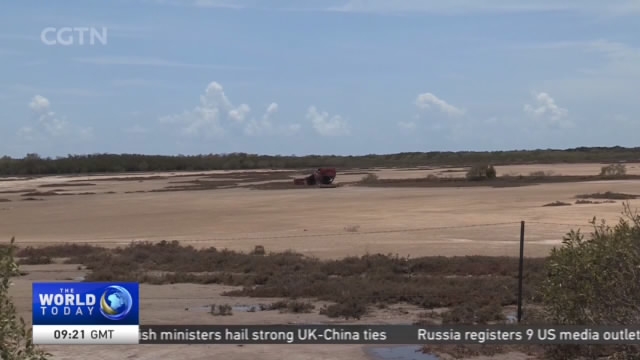
17:39, 05-Dec-2017
Agriculture in Australia: Researchers endeavor to find key to fighting desertification

Desertification is a big concern in Australia where it impacts a staggering 40-percent of the country's land. And once the soil turns to dust, its very hard to turn back. Researchers are going all out to find a solution. Our correspondent Greg Navarro has more.
In an experimental field just west of Sydney, Brajesh Singh takes the approach of a seasoned investigator. He's looking for clues in the vegetation - signs that Singh hopes will provide important answers.
The University of Western Sydney associate professor is trying to identify the early stages of desertification - a process where dry land areas that are already prone to drought become no longer productive for farmers.
ROFESSOR BRAJESH SINGH HAWKESBURY INSTITUTE FOR THE ENVIRONMENT "Because of the combinations of the natural aridity that combines with the human management, for example overgrazing, the management of agricultural practices and deforestation, it can really impact those vulnerable swathes and turn them into deserts. This is where we are dependent to feed most of our populations"
The UN says about 2 billion people live in dry land countries that are prone to desertification. And it's increasing because of climate change, and unsustainable farming.
ASSOCIATE PROF. BRENT JACOBS, RESEARCH DIRECTOR INSTITUTE FOR SUSTAINABLE FUTURES AT UTS "There are natural deserts so these areas are already dry but when you impose people and communities who are trying to make a living from that landscape on top of it you just make the problems worse."
Desertification is a particular concern in Australia where it impacts about 40% of the country's land. That includes a massive river system called the Murray Darling Basin - responsible for producing a third of Australia's food supply.
ASSOCIATE PROF. BRENT JACOBS, RESEARCH DIRECTOR INSTITUTE FOR SUSTAINABLE FUTURES AT UTS "The Murray Darling Basin is our food bowl and if we see massive change occurring particularly under climate change in that food bowl, then where will Australia's food come from?"
GREG NAVARRO SYDNEY "One thing that researchers here have discovered over time is that once an area reaches a certain level of desertification, it is no longer cost effective to try and bring that land back to a more productive stage."
That's why Singh is putting the plants here through increasingly drier conditions - to help identify the early signs of desertification - when the process can still be reversed.
PROFESSOR BRAJESH SINGH HAWKESBURY INSTITUTE FOR THE ENVIRONMENT "It is also a matter of identifying which particular type of plant species which can cope with a little bit higher drought or a little bit of desertification."
Because he says - those plants may be the key to bringing the dry land back to a level that people can once again depend on. Greg Navarro, CGTN, Sydney.

SITEMAP
Copyright © 2018 CGTN. Beijing ICP prepared NO.16065310-3
Copyright © 2018 CGTN. Beijing ICP prepared NO.16065310-3